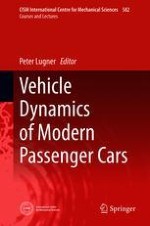
2019 | OriginalPaper | Chapter
Basics of Vehicle Dynamics, Vehicle Models
Authors : Peter Lugner, Johannes Edelmann
Published in: Vehicle Dynamics of Modern Passenger Cars
Publisher: Springer International Publishing
Activate our intelligent search to find suitable subject content or patents.
Select sections of text to find matching patents with Artificial Intelligence. powered by
Select sections of text to find additional relevant content using AI-assisted search. powered by